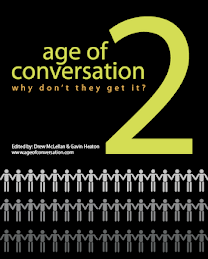Well, we’ve already talked about the importance of developing and exercising a great personal brand and how it has to be totally aligned with our values, principle, ideologies and priorities in life, mirroring these in everything we do, but how exactly can we generate awareness of our personal brand, once we’ve gone through the exercise of first establishing it?
It really is much simpler that it seems. As simple as counting to five, 5 steps to launch your personal brand.
- Join the conversation and listen: this is, without a doubt the most important step to launch your personal brand. So before you start talking and preaching that you are an expert in whatever area you specialize, stop and listen to the conversation that already existed about your subject of interest. Listen closely, absorb and learn as much as you can. Take the time to know the trends and understand the general opinions in your niche, identify who the thought leaders are and define your position. And please remember, God gave us a pair of ears, a pair of eyes and just one mouth to use them accordingly.
Now, how to start listening to the conversation? You can use different resources to find your subject’s thought leaders, like Blogcatalog.com, Bloglog.com, Technorati.com, etc, or you can just Google “Blogs about (ad your theme here) and you’ll most likely find so many people you can start learning from and collaborating with. - Define your differentiator: Once you’ve really listened to the conversation, analyzed it and were able to take a first look at what us going on, its time to define your position and the value that you are going to add to this dialog, which will, more likely than not, be tied to your values, principles and vision of life.
- Make yourself tangible: create your space, your base if you will. This can be your blog, your personal website, a profile in one or many social networks, etc. The main object here it to have a point of contact from which you can reach out to your audience to share your thoughts, opinions, knowledge, experience, insights, networks or anything positive you can think of. By the way, two very important practices I recommend are:
A) Get your own domain, that is yournamehere.com. It might sound exaggerated but if your name belongs to you and that is how people reach out to you off-line, why not do the same on-line? Getting your domain is easy, fast and relatively cheap, you can get it at resources like Nic.com or Godaddy.com
B) Remember, once you share something, anything and I do mean anything on line it will be accessible to a whole lot of people and recorded for posterity, so if you want to exercise and good personal brand, be very mindful of the content you generate and share. - And to continue on the subject of content, make sure yours is relevant, interesting and provocative for your audience. Give them a clear benefit in return for the minutes they are giving you. Of course your content has to be authentic, original and a reflection of your interests, knowledge, etc. but unless you are generating content just for yourself (in which case I’d recommend another very good practice: writing a journal) pay attention on the interests and need of your audience and respond the them accordingly.
- Open yourself to feedback and keep listening: keep in mind that exercising a personal brand has the objective of being represented in today’s worldwide conversation and the keyword here is CONVERSATION and in order for there to be one we need to listen and have good feedback. Fortunately there are different resources we can use to help us deal with this crucial task:
A) First of all you need to keep track of all the comments and opinions your audience leave for you. Every social media platform (blogs, networks, podcasts, video sharing, etc) have the functionality of allowing users to write comments about the content you share with them. On the other hand, some of your followers might want to share their thoughts in a more private fashion so be sure to have a special email address they can contact you through. Then, open yourself to the feedback, listen to it, understand it, cherish it and respond to it. Establish a healthy interaction.
B) Sometimes you might not get any comments in your comments section and you might get to think that no one has seen, read or listen to your stuff. Luckily for us, technology comes to the rescue and provide us with resources with which we can not only track how many visitors we got but what piece of our content is more relevant to them and which is the most popular. A tool you can use to track visits and behavior in your site is Google Analytics, its free and relatively easy to use in its basic functionality. Plus there are also some sites where you can keep track of how you rank versus other and how popular have you become, like technorati.com
Definitely, exercising and managing a great personal brand is no easy task and it is not something you can do in a flash or instantaneously. Seth Godin said it better when he said “It took me 6 years to have an overnight ".
Exercising a great personal brand requires work, time and focus plus honesty and authenticity; but like everything in life, those things that take really hard work from our part are the things that bring us more benefits in return.







